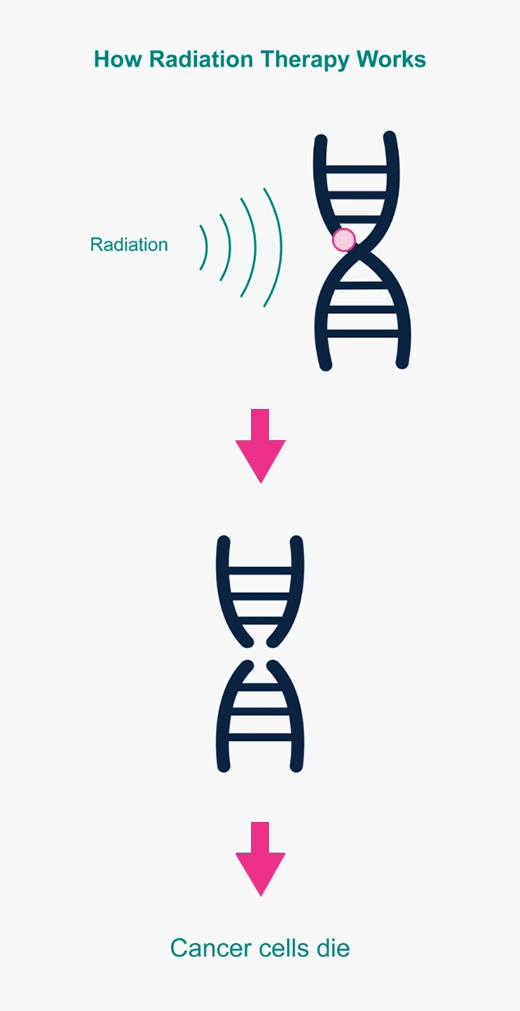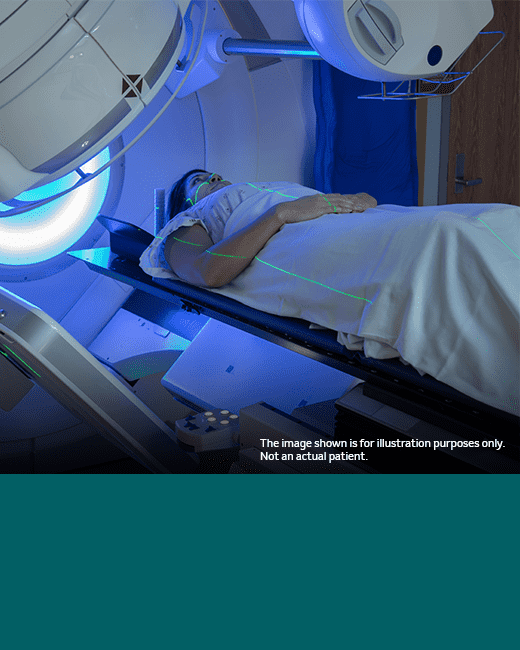Radiotherapy uses pulses of radiation to destroy cancer cells. It works by damaging the cancer cells’ ability to grow and multiply; it attacks the DNA within the cells that control these functions. When the cancer cells die, the body naturally eliminates them52.


Unlike systemic chemotherapy, which kills cancer cells wherever they are throughout the body, radiation only kills cancer cells at which it is aimed. It does not treat any cancer cells that may have spread elsewhere52.
Radiotherapy may be offered to surgically unfit patients, unresectable lung tumor due to its size and location, or patients who declined surgery53. In some cases, this may be combined with chemotherapy. For small cell lung cancer (SCLC), radiotherapy is often used in combination with chemotherapy54.
In breast cancer, radiotherapy is usually given after surgery (lumpectomy or mastectomy) to destroy any remaining cancer cells43. Radiotherapy may also be offered as a palliative option when cancer has spread to bone or brain to control symptoms such as pain or seizures55.
For more information, please click here for other lung cancer treatment types and here for other triple-negative breast cancer treatment types.




